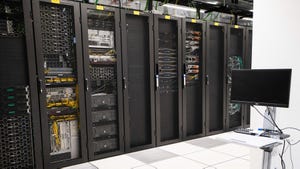Data Center Management and Control: Good SLAs Make Good NeighborsData Center Management and Control: Good SLAs Make Good Neighbors
Monitoring, DR readiness, partnership with provider vital considerations in selecting right data center services

In selecting the right colocation provider, important considerations are the data center management and monitoring tools available for the customer. Monitoring power consumption, having a DR-ready environment and truly partnering with the provider are vital consideration points in making the proper data center choice.
During the planning phases, things like contracts, expectations, and data center management tools must be laid out to ensure that everyone is on the same page. When working with a colocation provider, there will be important planning points and ongoing considerations around a good data center rollout.
Working with a Service Level Agreement. When selecting the right colocation provider, creating or having a good SLA and establishing clear lines of demarcation are crucial. Many times, an SLA can be developed based on the needs of the organization and what is being hosted within the data center infrastructure. This means identifying key workloads, applications, servers and more. From there, an organization can develop base service agreements for uptime, issue resolution, response time and more. Creating a good SLA document can take some time, but it’s important to do so carefully since this can govern the performance of your environment. Some very high-uptime environments will build in credits into their SLA. In these situations, for example, a colocation provider could issue credits if power is unavailable. Creating an SLA is a partnership between the data center provider and the customer. Expectations must be clearly laid out to ensure that all performance, recovery and other expectations are met. Surprises or encountering unknowns in a production, highly utilized environment can result in loss of productivity, time and dollars.
Maintenance and testing. Don’t forget, when you buy data center colocation you are buying a slice of critical infrastructure and ongoing maintenance. Without a robust maintenance program, technology will fail. Look for documented MOPs (method of procedure) and SOPs (standard operating procedure) that are used consistently and improved over time. Make sure your SLA does not exclude maintenance windows or emergency maintenance. Your colo provider should be able to show you their monthly, quarterly, and annual maintenance schedules for all critical elements of the mechanical and electrical systems including chillers, air handlers, generators, batteries, and UPSs. You should be able to observe and even participate in maintenance exercises. How are you notified about maintenance windows and procedures? Finally, ask the ultimate question, “Do you plan for and test a full utility outage?” Systems need to be designed with sufficient redundancy to allow for proper maintenance. Colocation providers are reluctant to maintain systems if it could potentially cause an outage. The industry best practice is to be able to “fix one and break one, concurrent with a utility outage.”
Having a DR-ready Contract. For some organizations, moving to a colocation data center is the result of a disaster recovery plan. In these situations, it may very well be possible to integrate a DR contract into an SLA or as a standalone agreement. In this document, the organization and colocation provider establish which internal systems must be kept live and create a strategy to keep those systems running. When designing a contract around a disaster recovery initiative, consider some of the following points:
Use your BIA. As mentioned earlier, a business impact analysis will outline the key components within a corporate environment which must be kept live or recovered quickly. This BIA can be shared with your colocation provider to ensure that they are able to meet those requirements. By having such a document, an organization can eliminate numerous variables in selecting a partner which is capable of meeting the company’s DR needs.
Communicate Clearly. Good communication between the colocation partner and the organization is vital in any DR plan. A situation in which an unknown system or component (that was deemed as critical but not communicated) goes down will become a serious problem. Aside from bringing the piece back up – now there is the question of responsibility. By knowing who is responsible for which piece during a disaster event will greatly streamline the recovery process.
Understand the DR Components and Data Center Offerings. Prior to moving to a colocation, establish your DR requirements, recovery time and future objectives. Much of this can be accomplished with a BIA, but planning for the future will involve conversations with the IT team and other business stakeholders. Once those needs are established, it’s important to communicate them to the colocation provider. The idea here is to align thought processes to ensure a streamlined DR environment.
Onsite and Offsite Supplies. If a disaster occurs, you need both onsite and offsite sources of key supplies. Are there onsite supplies of diesel fuel for generators and water for cooling systems? Are there established services in place for delivery of water and diesel fuel should onsite supplies be depleted? Does the colo provider conduct disaster recovery scenarios with key suppliers? For example, what if there is a power outage that causes the offsite diesel fuel supplier to be unable to fill their trucks – what happens?
Today’s world of high uptime demands and resource requirements mean that data center professionals must clearly understand how their services are managed. This is done through good communication with the partners, understanding underlying contracts, and ensuring that your business is constantly aligned. Remember, it’s important to work with partners that can clearly explain their level of service and keep up with your business demands.
About the Author
You May Also Like









